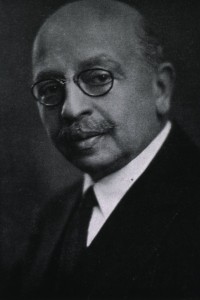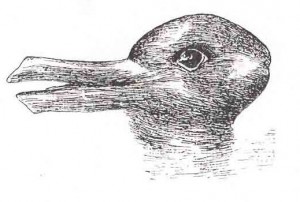by Jack El-Hai, Wonders & Marvels Contributor
When Joseph Jastrow died in 1944 at age 80, he was almost a forgotten figure in American psychology and certainly an irrelevant one to many minds. Decades earlier he had given up full-time work in academe, and his most recent writing, an analysis of the psychology of Adolf Hitler, had been ignored.
Yet for many years he had been America’s preeminent pop psychologist, finding ways to explain and interpret psychological ideas to lay audiences interested in bringing the wisdom of this new science into their daily lives. Drawn away from experimental psychology by personal tragedies, he wrote popular books and contributed to Harper’s Monthly and other consumer magazines. The Polish-born Jastrow was thus a predecessor of such recent pop psychologists as Joyce Brothers, M. Scott Peck, Wayne Dyer, and “Dr. Phil” McGraw.
Short and bespectacled, Jastrow was the first American to receive a doctorate in psychology, in 1883. He joined the faculty of the psychology department at the University of Wisconsin. There he built the first psychology laboratory that specialized in investigations of the senses. He examined involuntary movement, stereoscopic vision, deception, hypnosis, the mental acuity of conjurers, reasoning processes, and the formation of judgments. His studies of optical and psychological illusions carried his name around the world, and several of his illusions — still known as Jastrow Objects — continue to appear in psychology textbooks.
By 1900, his passion for experimental psychology had run dry and the stresses of his career brought him a mental breakdown and the need to seek medical care. (A newspaper headlined a story on Jastrow’s troubles as “Famous Mind Doctor Loses His Own.”) After a year away from academics, he focused his attention on popularizing psychology rather than continuing to labor in the laboratory. Later, the death of his son in World War I and his wife’s death added to Jastrow’s depression. He now tapped his talent for presenting psychology to the public, a skill he had cultivated years earlier at the 1893 Columbian Exposition in Chicago. At that public gathering — the same one at which the serial killer H.H. Holmes found his victims — Jastrow created an exhibit that included participatory activities, including psychological tests that visitors could take on the spot. One of his test-takers was the teenaged Helen Keller, who received from Jastrow the first thorough examination of her sensory faculties.
In 1901 Jastrow wrote Fact and Fable, the first of his many popular books on psychology. One of his favorite topics was the deceptive performances of mediums and psychics, and he joined with the stage entertainer Harry Houdini in jousting with Sir Arthur Conan Doyle and others who believed in the supposed talents of spiritualists. Meanwhile, although Jastrow came off as boring and incomprehensible in the classroom, he developed into an entertaining speaker on the popular lecture circuit. He gained fame for his lectures on “the will to believe,” his phrase for our tendency to let authority and sensationalism persuade us even when scientific evidence suggests we shouldn’t.
Toward the end of his life, Jastrow became a well known media personality. Soon after resigning from his teaching position at the University of Wisconsin, from which he had grown distant, Jastrow began writing a syndicated newspaper column, “Keeping Mentally Fit,” in 1927, and during the 1930s he refashioned his topics for radio audiences. His final books bore such titles as Piloting Your Life, Effective Thinking, and Sanity First — early entries in today’s self-help category. His last volume, Hitler: Mask and Myth, never found a publisher. By the end, audiences viewed his style as old-fashioned and formal, but he introduced countless people to the illuminating potential of the study of human behavior. “There was no exploiting just for the sake of sales or publicity,” one of his eulogists concluded. “Jastrow always left a dignified impression of psychology and did nothing to bring the science into disrepute.” Not all of today’s pop psychologists can claim the same.
Sources:
Behrens, Peter J. “War, Sanity, and the Nazi Mind: The Last Passion of Joseph Jastrow.” History of Psychology, Vol. 12, No. 4, pp. 266-284.
Blum, Deborah. “Mind Tricks for the Masses.” On Wisconsin Magazine, Summer 2010.
Pettit, Michael. “Joseph Jastrow, the Psychology of Deception, and the Racial Economy of Observation.” Journal of the History of the Behavioral Sciences, Vol. 43(2), pp. 159-175.
Pillsbury, W.B. “Joseph Jastrow, 1863-1944.” The Psychological Review, Vol. 51, No. 5, pp. 261-265.
This post first appeared on Wonders & Marvels in October 2012.


